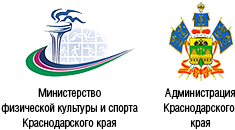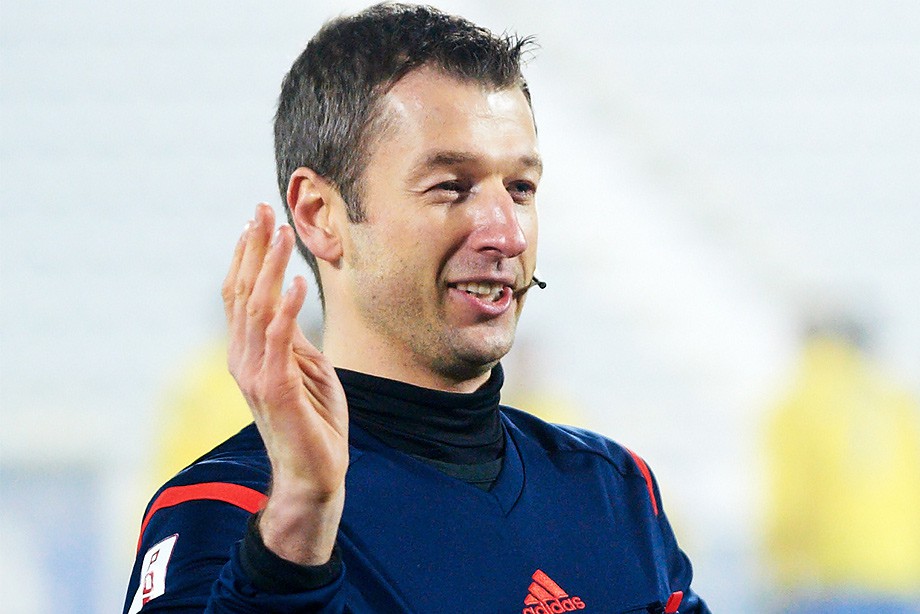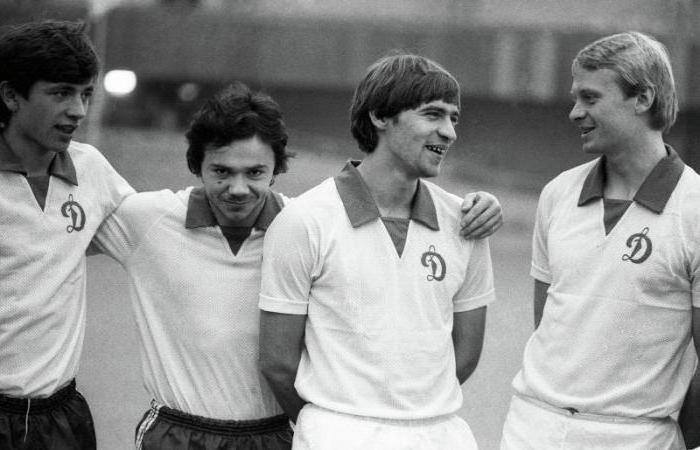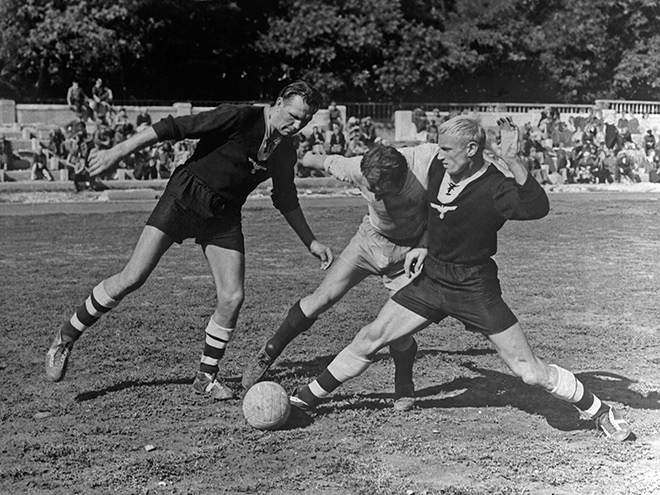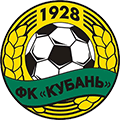Шведова, Анастасия Алексеевна. Анастасия шведова футбол
Шведова, Анастасия Алексеевна — Википедия
Материал из Википедии — свободной энциклопедии
В Википедии есть статьи о других людях с фамилией Шведова. Анастасия Шведова | |
 | |
| 2 февраля 1998(1998-02-02) (20 лет) | |
| 171 см | |
| 58 кг | |
| защитник | |
 Чертаново Чертаново | |
| 17 | |
| |
Анастасия Алексеевна Шведова (родилась 2 февраля 1998 года в Хотьково) — российская футболистка, защитник команды «Чертаново» и молодежной сборной России.
Первая команда в карьере — «Экостром» (Московская область). Первый тренер — Александр Червяков.
Клубная[править | править код]
Первую официальную игру за «Чертаново» провела в чемпионате России 6 июня 2015 в Красногорске против «Зоркого», выйдя на замену на 85 минуте вместо Маргариты Черномырдиной. 2 августа 2015 впервые вышла в стартовом составе в матче против «Кубаночки» и была заменена на 31 минуте матча.
В июле 2016 года на тренировке получила разрыв передней крестообразной связки и выбыла до конца сезона.
В сборной[править | править код]
В составе юниорской сборной России дебютировала 6 августа 2013 года в первом отборочном раунде юниорского чемпионата Европы против сборной Турции, выйдя на замену на 78 минуте вместо Ольги Волошиной. Свой первый гол за сборную забила 31 октября 2014 года в ворота сборной Англии с пенальти на 32 минуте матча.
За молодежную сборную России дебютировала 15 сентября 2015 года в первом отборочном раунде молодежного чемпионата Европы против сборной Болгарии, выйдя в стартовом составе.
- Бронзовый призёр Первенства России по футболу среди женских команд первой лиги 2016 год
ru.bywiki.com
Шведова, Анастасия Алексеевна Википедия
В Википедии есть статьи о других людях с фамилией Шведова. Анастасия Шведова | |
 | |
| 2 февраля 1998(1998-02-02) (20 лет) | |
| 171 см | |
| 58 кг | |
| защитник | |
 Чертаново Чертаново | |
| 17 | |
| |
Анастасия Алексеевна Шведова (родилась 2 февраля 1998 года в Хотьково) — российская футболистка, защитник команды «Чертаново» и молодежной сборной России.
Карьера
Первая команда в карьере — «Экостром» (Московская область). Первый тренер — Александр Червяков.
Клубная
Первую официальную игру за «Чертаново» провела в чемпионате России 6 июня 2015 в Красногорске против «Зоркого», выйдя на замену на 85 минуте вместо Маргариты Черномырдиной. 2 августа 2015 впервые вышла в стартовом составе в матче против «Кубаночки» и была заменена на 31 минуте матча.
В июле 2016 года на тренировке получила разрыв передней крестообразной связки и выбыла до конца сезона.
В сборной
В составе юниорской сборной России дебютировала 6 августа 2013 года в первом отборочном раунде юниорского чемпионата Европы против сборной Турции, выйдя на замену на 78 минуте вместо Ольги Волошиной. Свой первый гол за сборную забила 31 октября 2014 года в ворота сборной Англии с пенальти на 32 минуте матча.
За молодежную сборную России дебютировала 15 сентября 2015 года в первом отборочном раунде молодежного чемпионата Европы против сборной Болгарии, выйдя в стартовом составе.
Достижения
- Бронзовый призёр Первенства России по футболу среди женских команд первой лиги 2016 год
Источники
wikiredia.ru
Шведова, Анастасия Алексеевна - WikiVisually
1. Хотьково – It was first attested in 1308. It was granted a status in 1949. Within the framework of administrative divisions, it is, together with twenty-nine rural localities, as a municipal division, the Town of Khotkovo is incorporated within Sergiyevo-Posadsky Municipal District as Khotkovo Urban Settlement. The towns main industrial enterprises are Electroizolit, an electrical insulation manufacturer, Gorbunoskaya weaving mill, education facilities include a number of secondary schools, Abramtsevo Art and Industry College, and a music school. The town is the site of a monastery, founded by the parents of St. Sergius of Radonezh, the 19th-century artists community of Abramtsevo is situated within three miles from Khotkovo. Постановление №123-ПГ от28 сентября2010 г, «Об учётных данных административно-территориальных и территориальных единиц Московской области», в ред. Постановления №252-ПГ от26 июня2015 г, «О внесении изменения в учётные данные административно-территориальных и территориальных единиц Московской области». Опубликован, Информационный вестник Правительства МО, №10,30 октября2010 г, Закон №60/2005-ОЗ от28 февраля2005 г. «О статусе и границах Сергиево-Посадского муниципального района и вновь образованных в его составе муниципальных образований», Закона №161/2011-ОЗ от14 октября2011 г. «О внесении изменений в Закон Московской области О статусе и границах Сергиево-Посадского муниципального района и вновь образованных в его составе муниципальных образований», Вступил в силу со дня официального опубликования. Подмосковье, №42,10 марта2005 г
2. Россия – Russia, also officially the Russian Federation, is a country in Eurasia. The European western part of the country is more populated and urbanised than the eastern. Russias capital Moscow is one of the largest cities in the world, other urban centers include Saint Petersburg, Novosibirsk, Yekaterinburg, Nizhny Novgorod. Extending across the entirety of Northern Asia and much of Eastern Europe, Russia spans eleven time zones and incorporates a range of environments. It shares maritime borders with Japan by the Sea of Okhotsk, the East Slavs emerged as a recognizable group in Europe between the 3rd and 8th centuries AD. Founded and ruled by a Varangian warrior elite and their descendants, in 988 it adopted Orthodox Christianity from the Byzantine Empire, beginning the synthesis of Byzantine and Slavic cultures that defined Russian culture for the next millennium. Rus ultimately disintegrated into a number of states, most of the Rus lands were overrun by the Mongol invasion. The Soviet Union played a role in the Allied victory in World War II. The Soviet era saw some of the most significant technological achievements of the 20th century, including the worlds first human-made satellite and the launching of the first humans in space. By the end of 1990, the Soviet Union had the second largest economy, largest standing military in the world. It is governed as a federal semi-presidential republic, the Russian economy ranks as the twelfth largest by nominal GDP and sixth largest by purchasing power parity in 2015. Russias extensive mineral and energy resources are the largest such reserves in the world, making it one of the producers of oil. The country is one of the five recognized nuclear weapons states and possesses the largest stockpile of weapons of mass destruction, Russia is a great power as well as a regional power and has been characterised as a potential superpower. The name Russia is derived from Rus, a state populated mostly by the East Slavs. However, this name became more prominent in the later history, and the country typically was called by its inhabitants Русская Земля. In order to distinguish this state from other states derived from it, it is denoted as Kievan Rus by modern historiography, an old Latin version of the name Rus was Ruthenia, mostly applied to the western and southern regions of Rus that were adjacent to Catholic Europe. The current name of the country, Россия, comes from the Byzantine Greek designation of the Kievan Rus, the standard way to refer to citizens of Russia is Russians in English and rossiyane in Russian. There are two Russian words which are translated into English as Russians
3. Килограмм – The kilogram or kilogramme is the base unit of mass in the International System of Units and is defined as being equal to the mass of the International Prototype of the Kilogram. The avoirdupois pound, used in both the imperial and US customary systems, is defined as exactly 0.45359237 kg, making one kilogram approximately equal to 2.2046 avoirdupois pounds. Other traditional units of weight and mass around the world are also defined in terms of the kilogram, the gram, 1/1000 of a kilogram, was provisionally defined in 1795 as the mass of one cubic centimeter of water at the melting point of ice. The final kilogram, manufactured as a prototype in 1799 and from which the IPK was derived in 1875, had an equal to the mass of 1 dm3 of water at its maximum density. The kilogram is the only SI base unit with an SI prefix as part of its name and it is also the only SI unit that is still directly defined by an artifact rather than a fundamental physical property that can be reproduced in different laboratories. Three other base units and 17 derived units in the SI system are defined relative to the kilogram, only 8 other units do not require the kilogram in their definition, temperature, time and frequency, length, and angle. At its 2011 meeting, the CGPM agreed in principle that the kilogram should be redefined in terms of the Planck constant, the decision was originally deferred until 2014, in 2014 it was deferred again until the next meeting. There are currently several different proposals for the redefinition, these are described in the Proposed Future Definitions section below, the International Prototype Kilogram is rarely used or handled. In the decree of 1795, the term gramme thus replaced gravet, the French spelling was adopted in the United Kingdom when the word was used for the first time in English in 1797, with the spelling kilogram being adopted in the United States. In the United Kingdom both spellings are used, with kilogram having become by far the more common, UK law regulating the units to be used when trading by weight or measure does not prevent the use of either spelling. In the 19th century the French word kilo, a shortening of kilogramme, was imported into the English language where it has used to mean both kilogram and kilometer. In 1935 this was adopted by the IEC as the Giorgi system, now known as MKS system. In 1948 the CGPM commissioned the CIPM to make recommendations for a practical system of units of measurement. This led to the launch of SI in 1960 and the subsequent publication of the SI Brochure, the kilogram is a unit of mass, a property which corresponds to the common perception of how heavy an object is. Mass is a property, that is, it is related to the tendency of an object at rest to remain at rest, or if in motion to remain in motion at a constant velocity. Accordingly, for astronauts in microgravity, no effort is required to hold objects off the cabin floor, they are weightless. However, since objects in microgravity still retain their mass and inertia, the ratio of the force of gravity on the two objects, measured by the scale, is equal to the ratio of their masses. On April 7,1795, the gram was decreed in France to be the weight of a volume of pure water equal to the cube of the hundredth part of the metre
4. Защитник (футбол) – In the sport of association football, a defender is an outfield player whose primary role is to prevent the opposing team from scoring goals. There are four types of defenders, centre-back, sweeper, full-back, the centre-back and full-back positions are essential in most modern formations. The sweeper and wing-back roles are more specialised for certain formations, a centre-back defends in the area directly in front of the goal, and tries to prevent opposing players, particularly centre-forwards, from scoring. Centre-backs accomplish this by blocking shots, tackling, intercepting passes, contesting headers, with the ball, centre-backs are generally expected to make long and pinpoint passes to their teammates, or to kick unaimed long balls down the field. For example, a clearance is a long unaimed kick intended to move the ball as far as possible from the defenders goal, during normal play, centre-backs are unlikely to score goals. In this case, other defenders or midfielders will temporarily move into the centre-back positions, in the modern game, most teams employ two or three centre-backs in front of the goalkeeper. The 4–2–3–1, 4–3–3, and 4–4–2 formations all use two centre-backs, the sweeper is a more versatile centre-back who sweeps up the ball if an opponent manages to breach the defensive line. This position is more fluid than that of other defenders who man-mark their designated opponents. Because of this, it is referred to as libero. For example, the system of play, used in Italian football in the 1960s. The more modern libero possesses the qualities of the typical libero while being able to expose the opposition during counterattacks. The Fundell-libero has become popular in recent time with the sweeper transitioning to the most advanced forward in an attack. This variation on the position requires great pace and fitness, while rarely seen in professional football, the position has been extensively used in lower leagues. Modern libero sit behind centre-backs as a sweeper before charging through the team to join in the attack, some sweepers move forward and distribute the ball up-field, while others intercept passes and get the ball off the opposition without needing to hurl themselves into tackles. If the sweeper does move up the field to distribute the ball, they will need to make a speedy recovery, in modern football, its usage has been fairly restricted, with few clubs in the biggest leagues using the position. Though it is used in modern football, it remains a highly respected. A recent and successful use of the sweeper was made by Otto Rehhagel, Greeces manager, Rehhagel utilized Traianos Dellas as Greeces sweeper to great success, as Greece surprisingly became European champions. The full-backs take up the wide positions and traditionally stayed in defence at all times
5. Женская юниорская сборная России (U-17) по футболу – The Russia womens national under-17 football team is the national under-17 football team of Russia and is governed by the Football Union of Russia. Win Draw Loss Goalscorers with an number of goals are ranked in chronological order of reaching the milestone. As of 15 May 2014 / Official website / Website about Russian Women football
6. Футбол – Association football, more commonly known as football or soccer, is a team sport played between two teams of eleven players with a spherical ball. It is played by 250 million players in over 200 countries and dependencies making it the worlds most popular sport, the game is played on a rectangular field with a goal at each end. The object of the game is to score by getting the ball into the opposing goal, players are not allowed to touch the ball with their hands or arms while it is in play, unless they are goalkeepers. Other players mainly use their feet to strike or pass the ball, the team that scores the most goals by the end of the match wins. If the score is level at the end of the game, the Laws of the Game were originally codified in England by The Football Association in 1863. Association football is governed internationally by the International Federation of Association Football, the first written reference to the inflated ball used in the game was in the mid-14th century, Þe heued fro þe body went, Als it were a foteballe. The Online Etymology Dictionary states that the word soccer was split off in 1863, according to Partha Mazumdar, the term soccer originated in England, first appearing in the 1880s as an Oxford -er abbreviation of the word association. Within the English-speaking world, association football is now usually called football in the United Kingdom and mainly soccer in Canada and the United States. People in Australia, Ireland, South Africa and New Zealand use either or both terms, although national associations in Australia and New Zealand now primarily use football for the formal name. According to FIFA, the Chinese competitive game cuju is the earliest form of football for which there is scientific evidence, cuju players could use any part of the body apart from hands and the intent was kicking a ball through an opening into a net. It was remarkably similar to football, though similarities to rugby occurred. During the Han Dynasty, cuju games were standardised and rules were established, phaininda and episkyros were Greek ball games. An image of an episkyros player depicted in low relief on a vase at the National Archaeological Museum of Athens appears on the UEFA European Championship Cup, athenaeus, writing in 228 AD, referenced the Roman ball game harpastum. Phaininda, episkyros and harpastum were played involving hands and violence and they all appear to have resembled rugby football, wrestling and volleyball more than what is recognizable as modern football. As with pre-codified mob football, the antecedent of all football codes. Non-competitive games included kemari in Japan, chuk-guk in Korea and woggabaliri in Australia, Association football in itself does not have a classical history. Notwithstanding any similarities to other games played around the world FIFA have recognised that no historical connection exists with any game played in antiquity outside Europe. The modern rules of football are based on the mid-19th century efforts to standardise the widely varying forms of football played in the public schools of England
7. Красногорск – Krasnogorsk is a city and the administrative center of Krasnogorsky District in Moscow Oblast, Russia, located on the Moskva River, adjacent to the northwestern boundary of Moscow. An urban-type settlement was established here in 1932, to town status was granted in 1940. In the 1940s, the Antifascist Central School, in many foreign Communists studied and lectured, was located at Krasnogorsk. After the war, the German V2 rocket scientists which the Soviet Army had captured were settled here with their families, within the framework of administrative divisions, Krasnogorsk serves as the administrative center of Krasnogorsky District. As an administrative division, it is, together with two rural localities, incorporated within Krasnogorsky District as the Town of Krasnogorsk, as a municipal division, the Town of Krasnogorsk is incorporated within Krasnogorsky Municipal District as Krasnogorsk Urban Settlement. The city is known for the Krasnogorsky Zavod company, which produced the Zorki, Zenit, the coat of arms acknowledges this by featuring a prism and light rays. Krasnogorsk is one of the few oblast cities that is connected to Moscow via Moscow Metro and it is served by Metro station Myakinino. Crocus Expo, Russias largest exhibition center, is located in Krasnogorsk, the city is home to Zorky Krasnogorsk bandy team, who are former national champions for men and current champions for women. Their home arena has a capacity of 8,000, Krasnogorsk is the birthplace of Russian hockey player Vladimir Petrov. Krasnogorsk is twinned with, Губернатор Московской области, Постановление №123-ПГ от28 сентября2010 г. «Об учётных данных административно-территориальных и территориальных единиц Московской области», в ред, Постановления №252-ПГ от26 июня2015 г. «О внесении изменения в учётные данные административно-территориальных и территориальных единиц Московской области», Опубликован, Информационный вестник Правительства МО, №10,30 октября2010 г. Закон №70/2005-ОЗ от28 февраля2005 г, «О статусе и границах Красногорского муниципального района и вновь образованных в его составе муниципальных образований», в ред. Закона №8/2013-ОЗ от30 января2013 г, «О внесении изменений в Закон Московской области О статусе и границах Красногорского муниципального района и вновь образованных в его составе муниципальных образований». Вступил в силу со дня официального опубликования, Подмосковье, №42,10 марта2005 г. Official website of Krasnogorsk Official website of Zorky, a club based in Krasnogorsk
wikivisually.com
Анастасия Шведова Википедия
В Википедии есть статьи о других людях с фамилией Шведова. Анастасия Шведова | |
 | |
| 2 февраля 1998(1998-02-02) (20 лет) | |
| 171 см | |
| 58 кг | |
| защитник | |
 Чертаново Чертаново | |
| 17 | |
| |
Анастасия Алексеевна Шведова (родилась 2 февраля 1998 года в Хотьково) — российская футболистка, защитник команды «Чертаново» и молодежной сборной России.
Карьера
Первая команда в карьере — «Экостром» (Московская область). Первый тренер — Александр Червяков.
Клубная
Первую официальную игру за «Чертаново» провела в чемпионате России 6 июня 2015 в Красногорске против «Зоркого», выйдя на замену на 85 минуте вместо Маргариты Черномырдиной. 2 августа 2015 впервые вышла в стартовом составе в матче против «Кубаночки» и была заменена на 31 минуте матча.
В июле 2016 года на тренировке получила разрыв передней крестообразной связки и выбыла до конца сезона.
В сборной
В составе юниорской сборной России дебютировала 6 августа 2013 года в первом отборочном раунде юниорского чемпионата Европы против сборной Турции, выйдя на замену на 78 минуте вместо Ольги Волошиной. Свой первый гол за сборную забила 31 октября 2014 года в ворота сборной Англии с пенальти на 32 минуте матча.
За молодежную сборную России дебютировала 15 сентября 2015 года в первом отборочном раунде молодежного чемпионата Европы против сборной Болгарии, выйдя в стартовом составе.
Достижения
- Бронзовый призёр Первенства России по футболу среди женских команд первой лиги 2016 год
Источники
wikiredia.ru
Шведова, Анастасия Алексеевна Вики
В Википедии есть статьи о других людях с фамилией Шведова. Анастасия Шведова | |
 | |
| 2 февраля 1998(1998-02-02) (20 лет) | |
| 171 см | |
| 58 кг | |
| защитник | |
 Чертаново Чертаново | |
| 17 | |
| |
Анастасия Алексеевна Шведова (родилась 2 февраля 1998 года в Хотьково) — российская футболистка, защитник команды «Чертаново» и молодежной сборной России.
Карьера[ | код]
Первая команда в карьере — «Экостром» (Московская область). Первый тренер — Александр Червяков.
Клубная[ | код]
Первую официальную игру за «Чертаново» провела в чемпионате России 6 июня 2015 в Красногорске против «Зоркого», выйдя на замену на 85 минуте вместо Маргариты Черномырдиной. 2 августа 2015 впервые вышла в стартовом составе в матче против «Кубаночки» и была заменена на 31 минуте матча.
В июле 2016 года на тренировке получила разрыв передней крестообразной связки и выбыла до конца сезона.
В сборной[ | код]
В составе юниорской сборной России дебютировала 6 августа 2013 года в первом отборочном раунде юниорского чемпионата Европы против сборной Турции, выйдя на замену на 78 минуте вместо Ольги Волошиной. Свой первый гол за сборную забила 31 октября 2014 года в ворота сборной Англии с пенальти на 32 минуте матча.
За молодежную сборную России дебютировала 15 сентября 2015 года в первом отборочном раунде молодежного чемпионата Европы против сборной Болгарии, выйдя в стартовом составе.
Достижения[ | код]
- Бронзовый призёр Первенства России по футболу среди женских команд первой лиги 2016 год
Источники[ | код]
ru.wikibedia.ru
Анастасия Алексеевна Шведова Википедия
В Википедии есть статьи о других людях с фамилией Шведова. Анастасия Шведова | |
 | |
| 2 февраля 1998(1998-02-02) (20 лет) | |
| 171 см | |
| 58 кг | |
| защитник | |
 Чертаново Чертаново | |
| 17 | |
| |
Анастасия Алексеевна Шведова (родилась 2 февраля 1998 года в Хотьково) — российская футболистка, защитник команды «Чертаново» и молодежной сборной России.
Карьера
Первая команда в карьере — «Экостром» (Московская область). Первый тренер — Александр Червяков.
Клубная
Первую официальную игру за «Чертаново» провела в чемпионате России 6 июня 2015 в Красногорске против «Зоркого», выйдя на замену на 85 минуте вместо Маргариты Черномырдиной. 2 августа 2015 впервые вышла в стартовом составе в матче против «Кубаночки» и была заменена на 31 минуте матча.
В июле 2016 года на тренировке получила разрыв передней крестообразной связки и выбыла до конца сезона.
В сборной
В составе юниорской сборной России дебютировала 6 августа 2013 года в первом отборочном раунде юниорского чемпионата Европы против сборной Турции, выйдя на замену на 78 минуте вместо Ольги Волошиной. Свой первый гол за сборную забила 31 октября 2014 года в ворота сборной Англии с пенальти на 32 минуте матча.
За молодежную сборную России дебютировала 15 сентября 2015 года в первом отборочном раунде молодежного чемпионата Европы против сборной Болгарии, выйдя в стартовом составе.
Достижения
- Бронзовый призёр Первенства России по футболу среди женских команд первой лиги 2016 год
Источники
wikiredia.ru

